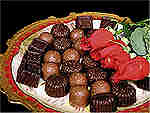 | Caffeine |  |
| You can call it 3,7-dihydro-1,3,7-trimethyl-1H-purine-2,6,-dione OR 1,3,7-trimethylxanthine, but what we are really talking about is CAFFEINE. Caffeine may be the most popular drug in the world. We consume caffeine in coffee, tea, cocoa, chocolate, some soft drinks, and some drugs. The actual source of caffeine is the coffee bean, tea leaf, kola nut and cacao pod. Pure caffeine is odorless and has a bitter taste. |  |
Effects of Caffeine on the Nervous System
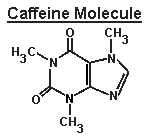 Caffeine is a central nervous system
stimulant. In moderate doses, caffeine can: Caffeine is a central nervous system
stimulant. In moderate doses, caffeine can:
In massive doses, caffeine is lethal. A fatal dose of caffeine has been calculated to be more than 10 grams (about 170 mg/kg body weight) - this is the same as drinking 80 to 100 cups of coffee in rapid succession - not an easy thing to do.
Caffeine belongs to the xanthine chemical group. Adenosine is a naturally occurring xanthine in the brain that is used as a neurotransmitter at some synapses. One effect of caffeine is to interfere with adenosine at multiple sites in the brain including the reticular formation. Caffeine also acts at other sites in the body to increase heart rate, constrict blood vessels, relax air passages to improve breathing and allow some muscles to contract more easily. Some studies show that caffeine causes physical dependence. One way to tell if someone "needs" that cup of coffee or bottle of Coke is to take it away from them and then see if they have any withdrawal symptoms. Typical withdrawal symptoms associated with caffeine are headache, fatigue and muscle pain. These symptoms can occur within 24 hours after the last dose of caffeine. One study has stated that the minimum consumption of caffeine for physical dependence is 4 cups of coffee per day. Other studies say that a few more cups of coffee are needed to develop dependence.
|
| Caffeine can be found in many drinks,
food and drugs. The following items all contain various amounts of
caffeine:
| ||||||||||||||||||||||||||||||||||||||||||||||||||||||||||||||||||||||||||||||||||||||||||||||||||||||||||||||||||||||||||||||||||||||||||||||||||||||||||||||||||||||||||||||||||||||||||||||
 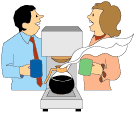 Researchers have attempted to find out how much
caffeine people consume every day. Americans consume about 45 MILLION
pounds of caffeine each year. In the United States, coffee drinkers drink
an average of 2.6 cups per day. Total caffeine intake for coffee drinkers
was 363.5 mg per day - this includes caffeine from coffee AND other
sources like soft drinks, food and drugs. Non-coffee drinkers even get
plenty of caffeine: former coffee drinkers get about 107 mg per day and
people who have never had coffee get about 91 mg per day. (References for these numbers is Schreiber et al., Measurement of
coffee and caffeine intake: Implications for epidemiolgic research,
Preventive Medicine, 17:280-294, 1988 and Chou, T., Wake up and
smell the coffee. Caffeine, coffee and the medical consequences, West.
J. Med., 157:544-553, 1992) Researchers have attempted to find out how much
caffeine people consume every day. Americans consume about 45 MILLION
pounds of caffeine each year. In the United States, coffee drinkers drink
an average of 2.6 cups per day. Total caffeine intake for coffee drinkers
was 363.5 mg per day - this includes caffeine from coffee AND other
sources like soft drinks, food and drugs. Non-coffee drinkers even get
plenty of caffeine: former coffee drinkers get about 107 mg per day and
people who have never had coffee get about 91 mg per day. (References for these numbers is Schreiber et al., Measurement of
coffee and caffeine intake: Implications for epidemiolgic research,
Preventive Medicine, 17:280-294, 1988 and Chou, T., Wake up and
smell the coffee. Caffeine, coffee and the medical consequences, West.
J. Med., 157:544-553, 1992)
 One more thing to think about...Caffeine does
NOT counteract the effects of alcohol. In
other words, coffee does NOT
make a drunk person sober or fit to drive. One more thing to think about...Caffeine does
NOT counteract the effects of alcohol. In
other words, coffee does NOT
make a drunk person sober or fit to drive. |
Try it! | How much caffeine do you consume each day? Use this worksheet to keep track of the products with caffeine that you consume. Write down the name of the product, the amount you consume of each product (for example, the number of ounces, grams, cups, bars, pills), the amount of caffeine in each product and the time that you consumed the product. Use separate worksheets if you want to track your caffeine consumption on different days. |
Did you
know? |
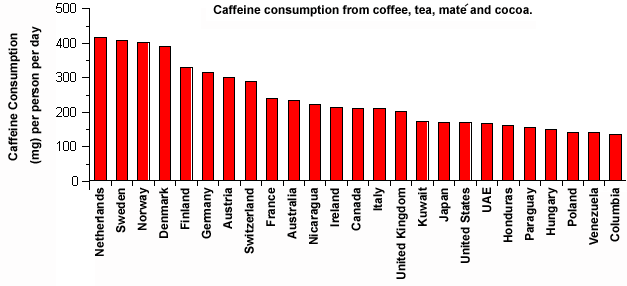 (Reference for data in graph: Fredholm, B. et al., Actions of caffeine in the brain with special reference to factors that contribute to its widespread use, Pharmacological Reviews, 51:83-133, 1999.) |
Did you know? | Caffeine was on the International Olympic Committee (IOC) list of prohibited substances for many years. Athletes who tested positive for more than 12 micrograms of caffeine per milliliter of urine could be banned from the Olympic Games. This level can be reached after drinking about 5 cups of coffee. However, the IOC REMOVED caffeine from the banned list in 2004. Caffeine was taken off of the list of banned substances so that athletes who drink cola or coffee are not penalized. (References: World Anti-Doping Agency.) |
They said it! | "Coffee and tea are extremely
hurtful to persons who have weak nerves." --- John Wesley, 1747 (in The Iliac Passion)
|
 For more information about caffeine, see: For more information about caffeine, see:
|

| READ ABOUT NEUROTRANSMITTERS |
| GO TO: | Alcohol | Amphetamines | Caffeine | Cocaine |
| Heroin | Inhalants | LSD | Marijuana | |
| Nicotine | Ecstasy | Rohypnol | 1,4-Butanediol | |
| GHB | Barbiturates | PCP | Hallucinogenic Mushrooms | |
| BACK TO: | Drug Effects
on the Nervous System |
Exploring the Nervous System | Table of Contents |
![[email]](./gif/menue.gif) Send E-mail |
 Get Newsletter |
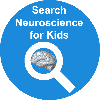 Search Pages |
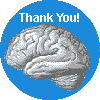 Donate to Neuroscience for Kids |
 Caffeine enters the bloodstream
through the stomach and small intestine and can have its effects as soon
as 15 minutes after it is consumed. Once in the body, caffeine will stay
around for hours: it takes about 6 hours for one half of the caffeine to
be eliminated.
Caffeine enters the bloodstream
through the stomach and small intestine and can have its effects as soon
as 15 minutes after it is consumed. Once in the body, caffeine will stay
around for hours: it takes about 6 hours for one half of the caffeine to
be eliminated.





